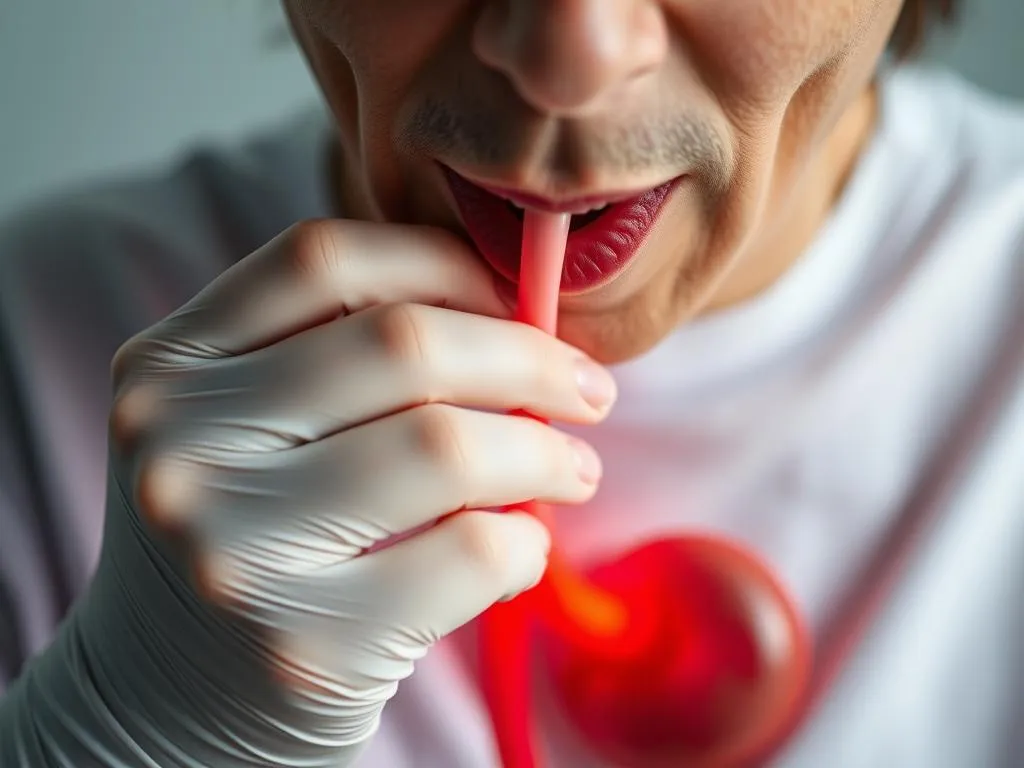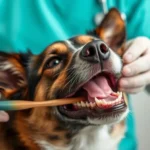
Introduction
Pancreatitis is a serious condition that can significantly affect the health of our pets. It involves inflammation of the pancreas, an organ that plays a crucial role in digestion and blood sugar regulation. Recognizing the symptoms of pancreatitis is vital for pet owners, as early intervention can prevent serious complications.
One of the less obvious symptoms that can arise from pancreatitis is bad breath. This can be alarming for pet owners, as it often indicates underlying health issues. Understanding how pancreatitis relates to bad breath can help pet owners identify when their furry companions might be in distress.
In this article, we’ll delve into the intricacies of pancreatitis, explore its symptoms—including bad breath—discuss its causes, diagnosis, and treatment options, and provide guidance on home care and monitoring.
Understanding Pancreatitis in Pets
What is Pancreatitis?
The pancreas is a vital organ responsible for producing digestive enzymes and insulin. When the pancreas becomes inflamed, it can disrupt these essential functions. Pancreatitis can be categorized into two types: acute and chronic.
- Acute pancreatitis occurs suddenly and can be severe, often requiring immediate medical attention.
- Chronic pancreatitis develops gradually and can lead to long-term health complications if not managed properly.
Symptoms of Pancreatitis
Recognizing the symptoms of pancreatitis in pets is crucial for early diagnosis and treatment. Common signs include:
- Vomiting: Frequent or severe vomiting can indicate a problem with the pancreas.
- Diarrhea: Loose or watery stools are often observed.
- Abdominal pain: Pets may show signs of discomfort, such as whining or a hunched posture.
- Lethargy: A noticeable decrease in energy levels is common.
- Loss of appetite: Pets may refuse food, leading to weight loss.
- Bad breath: This symptom can indicate a metabolic change due to pancreatitis, leading to a distinct odor.
Causes of Pancreatitis
Several factors can contribute to the development of pancreatitis in pets:
- Dietary factors: High-fat diets or sudden dietary changes can trigger an episode of pancreatitis. It is essential to introduce new foods gradually.
- Obesity: Overweight pets are at a higher risk of developing pancreatitis.
- Certain medications: Some drugs can lead to inflammation of the pancreas as a side effect.
- Underlying health conditions: Conditions such as diabetes or Cushing’s disease can predispose pets to pancreatitis.
The Link Between Pancreatitis and Bad Breath
Mechanism of Bad Breath in Pets with Pancreatitis
The connection between pancreatitis and bad breath lies in the metabolic changes that occur during the disease. When the pancreas is inflamed, it can lead to an imbalance in the body’s chemistry. This imbalance can promote the overgrowth of certain bacteria in the mouth and digestive tract, resulting in halitosis or bad breath.
Inflammation also affects how the body processes food, leading to the production of various byproducts that can contribute to unpleasant odors. The relationship between these metabolic changes and oral health is significant, making it essential for pet owners to monitor their pets closely.
Other Causes of Bad Breath in Pets
While pancreatitis can cause bad breath, it’s important to consider other potential sources. Some common causes include:
- Dental diseases: Plaque and tartar buildup can lead to periodontal disease, a primary cause of bad breath.
- Kidney issues: Kidney disease can cause a distinctive bad breath odor often described as “urine-like.”
- Respiratory infections: Conditions affecting the respiratory system can contribute to halitosis.
- Gastrointestinal disorders: Issues such as gastritis or intestinal blockages may lead to foul-smelling breath.
Diagnosis of Pancreatitis
Veterinary Examination
If you suspect that your pet may have pancreatitis or is experiencing bad breath, a thorough veterinary examination is essential. Your veterinarian will assess your pet’s medical history, conduct a physical examination, and observe for any symptoms indicative of pancreatitis.
Key Diagnostic Tests
Several diagnostic tests can help confirm a diagnosis of pancreatitis:
- Blood tests: These can reveal elevated levels of pancreatic enzymes, indicating inflammation.
- Ultrasound: An ultrasound can visualize the pancreas and detect any abnormalities such as swelling or fluid accumulation.
- X-rays: While not specific for pancreatitis, X-rays can help rule out other gastrointestinal issues.
Determining the Cause of Bad Breath
It’s crucial to rule out other potential causes of bad breath. Your veterinarian may conduct additional tests, such as dental examinations or blood tests to assess kidney function, to pinpoint the source of the odor.
Treatment Options for Pancreatitis
Immediate Care
Pets diagnosed with pancreatitis often require hospitalization for immediate care. Treatment typically includes:
- IV fluids: Hydration is critical, especially if your pet has been vomiting or refusing to eat.
- Medications: Pain relief and anti-nausea medications may be administered to ensure your pet’s comfort.
Dietary Management
Once your pet stabilizes, dietary management becomes a crucial aspect of recovery. A low-fat diet is typically recommended to give the pancreas time to heal. Here are some tips for dietary management:
- Recommended diets: Your veterinarian may suggest a special prescription diet designed for pets recovering from pancreatitis.
- Foods to avoid: Steer clear of high-fat treats, table scraps, or sudden changes in diet to prevent future flare-ups.
Long-term Management and Prevention
For pets with a history of pancreatitis, long-term management strategies are essential:
- Lifestyle changes: Maintaining a healthy weight through a balanced diet and regular exercise is critical.
- Monitoring for recurring symptoms: Pet owners should keep an eye out for any signs of worsening condition, including bad breath or gastrointestinal upset.
Home Care and Monitoring
Recognizing Warning Signs
As a pet owner, knowing what to watch for at home can make a significant difference in your pet’s health. Be vigilant for signs such as:
- Sudden changes in appetite
- Frequent vomiting or diarrhea
- Signs of discomfort or pain
- Persistent bad breath
If you notice any of these symptoms, it’s essential to contact your veterinarian promptly.
Maintaining Oral Hygiene
Good oral hygiene is vital for preventing bad breath. Here are some tips:
- Regular dental check-ups: Schedule professional dental cleanings as part of your pet’s routine veterinary care.
- At-home dental care: Brush your pet’s teeth regularly with pet-safe toothpaste and provide dental chews designed to reduce plaque buildup.
Frequently Asked Questions (FAQs)
Can pancreatitis be cured?
While pancreatitis may not have a definitive cure, it can be managed effectively. With proper treatment and dietary management, many pets can lead a normal, healthy life.
Is bad breath always related to pancreatitis?
No, bad breath can stem from various health issues, including dental problems, kidney disease, or gastrointestinal disorders. It’s important to conduct a thorough evaluation to determine the underlying cause.
Are certain breeds more prone to pancreatitis?
Yes, some breeds are more susceptible to pancreatitis, including Miniature Schnauzers, Yorkshire Terriers, and Dachshunds. Understanding breed-specific risks can help owners take preventive measures.
Conclusion
Recognizing the signs of pancreatitis in pets is essential for early intervention and effective treatment. Bad breath can be a key indicator of this condition, and being vigilant about your pet’s overall health can make all the difference.
As a responsible pet owner, it’s crucial to seek veterinary care for any concerning symptoms and to maintain regular check-ups. Preventive care, including a balanced diet and good oral hygiene, plays a vital role in ensuring your pet remains healthy and happy. Remember, your pet relies on you to keep them safe and healthy, so stay informed and proactive about their well-being.









